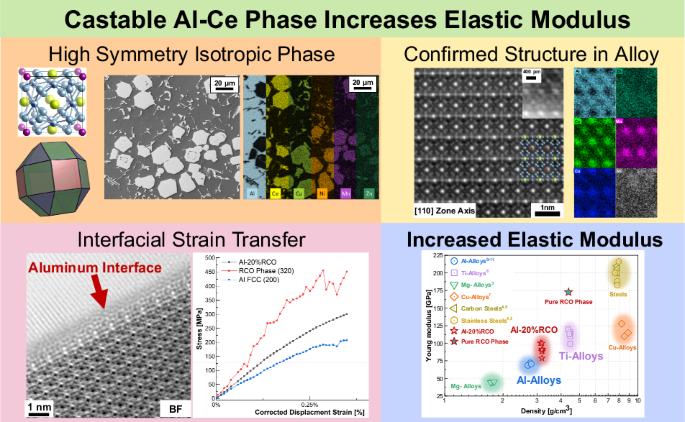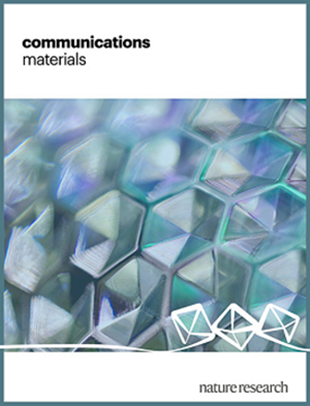二次相增加了铝铈合金铸件的弹性模量
IF 7.5
Q1 MATERIALS SCIENCE, MULTIDISCIPLINARY
引用次数: 0
摘要
在金属铸件中进行合金化是强化合金以满足各种结构和功能应用的主要方法之一,但很少能改变合金的弹性模量。我们报告了一种结合等结构 Laves 相以形成多组分、高对称性、各向同性相的方法,发现这种方法可将铸铝合金的弹性模量提高到 91.5 ± 7.4 GPa。菱形立方体相(RCO)因其观察到的形态而得名,通量生长的菱形立方体相单晶被用于加深对该相结构和机械性能的理解。利用 X 射线和中子衍射共同提炼了纯 RCO 相的结构和位点占位。对铸造合金的动态纳米力学测试表明,初级 RCO 相具有较高的、相对各向同性的弹性模量。这种含有 RCO 的铝合金的比模量超过了主要的铝、镁、钢和钛合金。本文章由计算机程序翻译,如有差异,请以英文原文为准。


Secondary phase increases the elastic modulus of a cast aluminum-cerium alloy
Alloying in metal castings is one of the principal methods of strengthening an alloy for various structural and functional applications, but very rarely does it modify an alloy’s elastic modulus. We report a methodology of combining isostructural Laves phases to form a multi-component, high symmetry, isotropic phase that was discovered to enhance the elastic modulus of a cast aluminum alloy to 91.5 ± 7.4 GPa. Flux grown single crystals of the rhombicuboctahedron phase (RCO), so named for the observed morphology, were used to enhance understanding of the structure and mechanical properties of the phase. The pure RCO phase’s structure and site occupancies were co-refined using x-ray and neutron diffraction. Dynamic nanomechanical testing of the cast alloy shows the primary RCO phase has a high, relatively isotropic, elastic modulus. This RCO containing aluminum alloy is found to have a specific modulus that exceeds that of the leading Al, Mg, Steel, and Ti alloys. The elastic properties of alloys are typically insensitive to changes in microstructure. Here, an as-cast Al-Ce alloy achieves a large Young’s modulus of approximately 92 GPa, due to the presence of isotropic, high symmetry secondary phase.
求助全文
通过发布文献求助,成功后即可免费获取论文全文。
去求助
来源期刊

Communications Materials
MATERIALS SCIENCE, MULTIDISCIPLINARY-
CiteScore
12.10
自引率
1.30%
发文量
85
审稿时长
17 weeks
期刊介绍:
Communications Materials, a selective open access journal within Nature Portfolio, is dedicated to publishing top-tier research, reviews, and commentary across all facets of materials science. The journal showcases significant advancements in specialized research areas, encompassing both fundamental and applied studies. Serving as an open access option for materials sciences, Communications Materials applies less stringent criteria for impact and significance compared to Nature-branded journals, including Nature Communications.
 求助内容:
求助内容: 应助结果提醒方式:
应助结果提醒方式:


